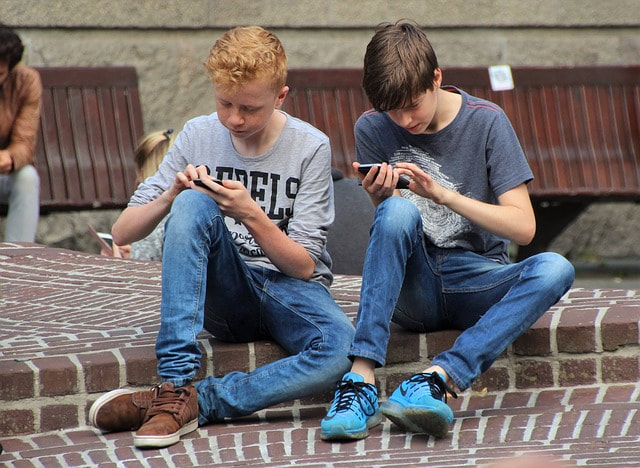|
French students are about to get a much-needed detox from their cellphones now that the government has banned them during school for kids 15 and under. When will our educational system follow France’s lead?
Sadly, most schools in the United States are turning a blind eye to a looming public health crisis. What are we waiting for? A tragedy? Ten years of data? A lost generation? Not on my watch. These are my children, their peers and their friends. As a parent, I will not allow them to be guinea pigs or data points. We have to do something. In the beginning, most of us try our best to embrace phone technology; after all, it is the future. We try to let go and be open-minded. While some teachers are able to control cellphones in their classrooms with a variety of innovative ideas and consequences, many either cannot or will not. Enforcing phone restrictions eats into precious class time, so some tired teachers have instead begged for 20 phone-free minutes, rewarding students with unregulated “work” time for the rest of the period. Cellphones make wonderful babysitters. Others have flocked to a disturbing “govern yourself” policy. Instead of fighting phones, they give students the freedom to choose: Put them away and learn, or keep them out and do poorly. Imagine a typical middle school boy. Will rocks and minerals capture his attention or Fortnight on his phone? You don’t have to get too deep into brain research to know that he will often make the wrong choice. So, what are we left with? Lower test scores. Struggling students. Brilliant screens dulling our children’s learning, discussion and creativity. And that’s just scratching the surface. Phones are taking an astronomical toll on the social, mental and emotional health of our students. Bullying during school has shifted online. Boys meet in the bathroom to look at porn, and girls scroll through events they weren’t invited to and cut themselves to dull the pain. Kids are airdropping nude photos during class. No wonder there is little brain capacity left for a five-paragraph essay. Lunch rooms are strangely quiet as kids play online games or pass around gossip-worthy photos, and we wonder why kids are suffering from depression and anxiety like never before. They will never get these years back. Some have created an enforceable phone policy. Two approaches schools have implemented are as follows: Over-the-door shoe pouch where phones are held during class time. Zero-tolerance policy where phones are taken if they are seen or heard. I am not sure what everyone is so afraid of. Parents could still get a hold of children if there is an emergency. Office phones are alive and well. School-owned computers and tablets can teach students how to use technology in ways that are actually educational. They will not fall behind the curve if they don’t master Instagram or Game Pigeon. If very little is being done in your child’s You can try to pressure your school board and principals purchasing a flip phone for my seventh-grader and Looking back on the year, they were both grateful for a less distracted opportunity to learn. But not every parent can or will regulate like this, so we must have policy. Public education exists to give every student a fair opportunity to learn, regardless of background, socioeconomic status or family situation, and phones — not politicians or lack of funding — are stealthily stripping that opportunity away. It’s time to take a stand. School administrators everywhere must enact real, enforceable cellphone policies, now, that take phones out of classrooms and put education back in. They are responsible for the learning that does or does not take place during the seven hours students are in school and have the power to change this destructive environment. Teachers need administrative leadership and support, and our children need a fighting chance to excel in this oversaturated world. We cannot wait one year longer. Our children deserve more. One thing parents can do is download and install an app that allows them to shut off their child’s phone during school time. I have listed several popular apps that allow parents to control screen time and content. SCREEN TIME https://screentimelabs.com/ BARK https://www.bark.us/ HUB https://plugnplayhub.com/ WEBWATCHER https://www.webwatcher.com/ca CONSUMER ADVOCATE – PARENTAL APPS https://www.consumersadvocate.org/parental-control-apps Thomas Kessler, LMFT, RAS www.thomkesslertherapist.com marintherapist@gmail.com Comments are closed.
|
Thom KesslerMarriage & Family Therapist and Registered Addiction Specialist Archives
January 2024
Categories |

 RSS Feed
RSS Feed